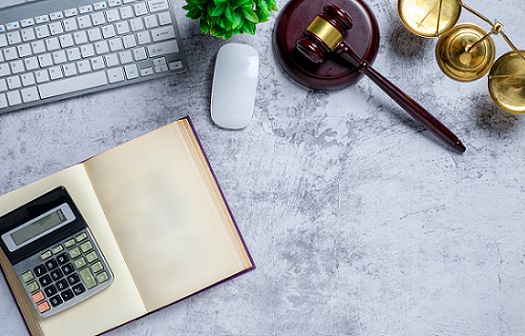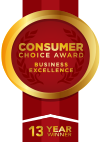Maybe you’ve seen advertisements for debt forgiveness programs, or you’ve been struggling with debt, or credit card balances that feel never-ending and wondering what, if anything, you can do about it. The good news is that there are two different options for debt forgiveness in Canada – one that can completely forgive all your debts, and another to forgive a portion of your debt. Both will help you get your debt balances down to zero so that you can begin again to move forward with your life. Read on to learn more about the options for legal debt forgiveness, and which debt forgiveness solution may be right for you.
Canada Has Only Two Legal Debt Forgiveness Solutions
The first thing to be aware of is that there are only two options that can allow you to be discharged (released) from your debts: a Consumer Proposal or Bankruptcy.
Advertisements from debt settlement companies and credit counsellors can sometimes be misleading. Consumers need to know that:
- There is no such thing as government-affiliated, government-subsidized or government-supported debt repayment plans or programs. Organizations who claim to be part of a government program or affiliation are likely misrepresenting themselves.
- The only government-regulated options that can release you from your debt are those administered (exclusively) by Licensed Insolvency Trustees: Consumer Proposals, Division I Proposals, Bankruptcy.
- Only a Licensed Insolvency Trustee can offer you legal protection from creditors’ actions and prevent creditors from pursuing you for monies owed.
One simple way to make sure you’re speaking with an expert who can help you with a legal debt forgiveness solution is to simply ask “Are you a Licensed Insolvency Trustee?”.
- If they don’t employ a Licensed Insolvency Trustee, it is illegal for a company to claim they can manage a Consumer Proposal or bankruptcy for you.
Debt Settlement Companies – Proceed with Caution
Debt settlement companies offer to negotiate with your creditors (for a fee) and typically offer your creditor a lump sum of money to settle your debt for less than what you owe.
- Some credit counsellors also offer this type of service, but usually don’t promise to get any of your debt forgiven. With credit counselling debt management plans you’ll usually pay back 100% of what you owe (sometimes without interest), but there is no agreement by the creditor for debt reduction.
There are many areas to be cautious of with debt settlement – from risking escalating creditor collection to high fees and more. Be aware that:
- There are some provincial rules in place to help curb upfront fee charges and require agents to be licensed with Consumer Protection BC, but this type of informal debt repayment (including credit counselling) is not a regulated industry.
- Anyone who claims to be able to quickly boost your credit score is misleading you; improving your credit score takes time.
Learn More About Debt Settlement Agents and Credit Counsellors
How Do I Qualify for Debt Relief and Forgiveness?
Debt forgiveness options available to you are not “exclusive” nor do you need a referral to access debt relief. You can connect with a Licensed Insolvency Trustee directly at any time; ask questions, discuss your situation and options, or work together on a debt-free plan.
There are few qualifiers to access legal debt solutions – you just need to owe at least $1,000 and be unable to repay all your debts as they become due. When you meet with your Licensed Insolvency Trustee you will work together to consider your overall situation and needs to determine which option makes the most sense for you. For example, if you can afford to make some repayment towards your debt a Consumer Proposal, which has partial debt forgiveness, may be a more appropriate choice than bankruptcy with full debt forgiveness.
What to Expect During Your Free Confidential Debt Consultation
Personal Bankruptcy – Debt Relief and Forgiveness
Bankruptcy is a legal solution that allows you to have debt relief and in many cases all a person’s debts can be forgiven. For people who don’t know how it works, bankruptcy often sounds a lot scarier than it really is; and for most Canadians the process is a private, straight-forward affair.
Although no one wants to have to file bankruptcy, many people find themselves overwhelmed with a debt problem, often brought on by stressful life events such as a job loss, marriage breakup, illness, etc. – and the relief of bankruptcy and lifting the weight of debt they have been struggling with is generally very welcome.
Choosing bankruptcy for consumer debt relief enables an individual to:
- Get forgiveness for debts including (but not limited to): credit card debt, overdrafts, tax debt, ICBC debt, payday loans, student loans and more.
- Protect assets and income that may otherwise be vulnerable to seizure by creditors.
- Stop the stress from never-ending balances, overwhelming payments or collection actions.
- Have a clear “debt-free date” and financial fresh start that will help you meet your future financial goals and move forward with your life.
Learn About Life After Bankruptcy
Most bankruptcies in Canada are “voluntary” – the person who is in debt seeks out and starts the bankruptcy process to deal with their debt.
- You do not need to get permission from your creditors to file bankruptcy, nor do you need to apply to court be declared bankrupt.
- The option and decision to file personal bankruptcy is yours, no creditor can prevent you from seeking protection with bankruptcy if you’re struggling with debt.
- To declare personal bankruptcy in Canada you will work through a Licensed Insolvency Trustee. They are the only professionals designated and authorized to administer this process, there is no need for a lawyer, nor can you “act as your own Trustee” in the process.
- The cost of filing bankruptcy is usually substantially less than repaying your debts in full.
Basic Steps to Declaring Bankruptcy in Canada
- Connect with a Licensed Insolvency Trustee in your province for a confidential consultation and assessment of your situation and options.
Sands & Associates can assist residents across BC, with full debt help services available in-person, as well as virtually, from the comfort of home. Request your free debt consultation to get started.
- Complete some intake forms and then sign the official personal bankruptcy documents that your Licensed Insolvency Trustee prepares.
At the signing stage your bankruptcy will become official and legal protection from creditors will be put in place. Creditors will no longer able to charge you ongoing interest or pursue you for payment – and all collections, garnishments, etc. must cease.
- Work through and complete the bankruptcy process.
There are a few main duties you are required to fulfill as part of your bankruptcy. Most duties in bankruptcy last for only 9 months from the date of signing until you are discharged (released). Your Licensed Insolvency Trustee will help guide you and be available for ongoing support throughout.
- Once your personal bankruptcy is complete (usually the 9-month mark) you will have achieved full and final settlement / forgiveness of your debts.
The debts stayed by and included in your bankruptcy are now written-off and forgiven by your creditors. You are officially debt-free and have achieved a financial fresh start!
Learn More About Debt Forgiveness with Personal Bankruptcy: Step-by-Step
Many people dismiss the option of bankruptcy because of negative things they may have heard, or misunderstandings about how the process works. It’s important to be aware that if you are seeking guidance or professional debt help you can connect with a Licensed Insolvency Trustee confidentially to learn more about your options and gain information specific to you and your situation, without impacting your credit history or committing to entering bankruptcy.
My Spouse is Filing for Bankruptcy – Now What?
Bankruptcy usually means total forgiveness of all debts – but if you’re looking for an option that is part forgiveness and part consolidated repayment plan, a Consumer Proposal is an alternative to bankruptcy that offers many of the same benefits.
Consumer Proposal – Debt Consolidation AND Forgiveness
The first thing to understand is that Consumer Proposals are NOT bankruptcy. They are a unique legal debt solution with many advantages over both traditional consolidation loan options and credit counselling programs. There is no borrowing involved with a Consumer Proposal, so your credit score is not a consideration – and there are no professional fees added to your monthly payments.
A Consumer Proposal allows you to consolidate all your debts, stop all future interest charges and repay a portion of the debt (often as little as 20-50%) in full satisfaction of amounts owing. The timeframe you have to complete your Consumer Proposal payments depends on your situation – it could be just a single lump-sum payment, or as long as 5 years – your proposal is tailored to your needs.
How Much Debt Will a Consumer Proposal Eliminate? Learn More
Working with a Licensed Insolvency Trustee you will offer to repay only the portion of the total debt (including accumulated interest) that you can afford to repay, with the unpaid balance of your debt being forgiven by your creditors. Here’s an example of how a Consumer Proposal works:
- A person who owes $20,000 offers a Consumer Proposal to repay 30% of this total amount owing by way of monthly payments of roughly $165 for 36 months.
- Once the Consumer Proposal officially begins creditors will stop collecting their individual payments, and at the end of the Consumer Proposal the unpaid balance (70% of the total debt) is forgiven.
Whether you don’t need any debt forgiveness but want a structured interest-free repayment plan, or you prefer to streamline debt with an affordable consolidation plan that has some of your debt forgiven, Consumer Proposals are deliberately tailored to each person’s situation, making them a great option for many people.
Benefits of Choosing a Consumer Proposal
Some key benefits of choosing a Consumer Proposal for debt consolidation and partial debt forgiveness include:
- Consolidating virtually all your debt without borrowing, including (but not limited to): credit cards, overdrafts, lines of credit, payday loans, Canada Revenue Agency debt, student loans and more.
- Cutting total debt down to what you realistically can afford to repay.
- Consumer Proposals often result in savings on a monthly payment basis as well as overall since debt are substantially reduced.
- Breathing room from your debts and protection from your creditors, without declaring bankruptcy.
- Having a clear “debt-free” date (although you can pay off your Consumer Proposal early any time!).
If a Consumer Proposal seems like an option you may want to consider, all you need to do is connect with a Licensed Insolvency Trustee. We can help you assess whether a Consumer Proposal could work for you, and at no cost estimate a potential Consumer Proposal for you.
The idea of talking with a professional about debt forgiveness can feel uncomfortable and even overwhelming for a lot of people. Please know that we are not here to judge you or the circumstances that have brought you to us. We are here to offer you solutions, support, and a way forward.
Learn more about debt forgiveness or get started with your debt-free plan. Book your free confidential debt consultation with Sands & Associates today.






